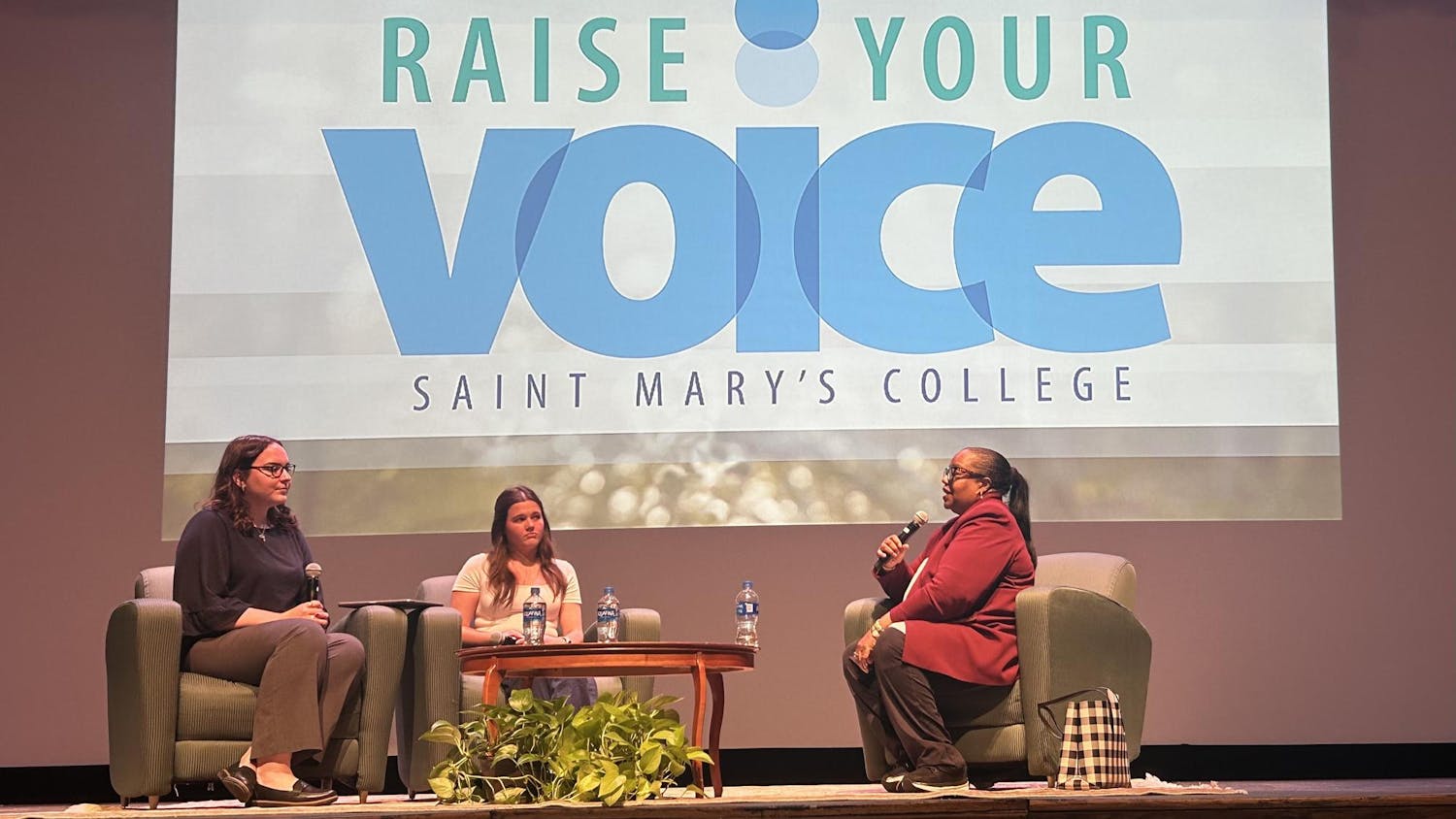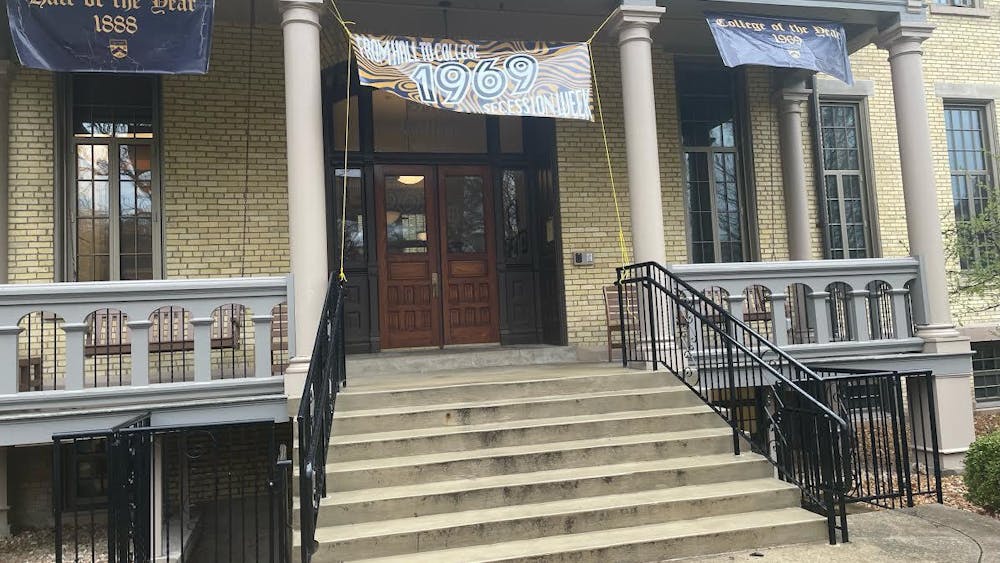Editor's note: This is the fourth installment in a four-part series commemorating the 40th anniversary of the Notre Dame 10 and looking at student activism on campus today. The first three parts introduced the Notre Dame 10 and their protest efforts and examined University President Emeritus Fr. Theodore Hesburgh's 15-minute rule.
Senior Kristi Haas has observed two different kinds of activism on campus during her past three years at Notre Dame.
"I know so many students involved in direct service through the Center for Social Concerns, and that is a sort of activism," she said. "And then there is the kind of activism that critiques the structures involved in why people need to do direct service.
"That kind of activism is less visible, but it's here."

Both types are crucial on a college campus, said Haas, who is involved in the Notre Dame Peace Fellowship (NDPF).
NDPF, which works on peace initiatives both globally and in South Bend, co-sponsored Wednesday's events commemorating the 40th anniversary of a Vietnam War-related protest at Notre Dame in 1969 and the subsequent suspension of the Notre Dame 10.
The 10 Notre Dame students were suspended for blocking recruiters from the Central Intelligence Agency (CIA) and The Dow Chemical Co. in the Main Building on Nov. 18, 1969.
Last year, NDPF also protested the CIA's recruitment efforts at the fall career fair.
"We really questioned Notre Dame's relationship with the CIA," Haas said. "This is a question that has been around for a long time. It's something Notre Dame had to grapple with in 1969 and even before that."
Many student leaders agree that activism on campus today has changed since the 1960s but it is still prevalent, although maybe less noticeable.
"There's a certain process you have to go through to hold a march or demonstration on campus that, I think, lowers the amount of activism on campus," sophomore Jackie Emmanuel, president of the Progressive Student Alliance (PSA), said.
According to du Lac, the student handbook, all demonstrations must be registered in writing with the associate vice president for Residence Life. The handbook also states that protests must be "peaceful and orderly" and not impede the freedom of the University community.

Emmanuel said one of the leading issues she sees on campus is the fight for the University to include sexual orientation in its non-discrimination clause — an ongoing effort by PSA.
The group most recently submitted a petition asking for the addition of the clause to University President Fr. John Jenkins last spring, but they were not successful.
"I think the students who are dedicated to activism on campus put a lot of time and effort and heart into what they are advocating for," junior Bridget Flores, also a member of PSA, said.
But Flores said she sees a certain apathy in many Notre Dame students.
"I think a lot of that comes from ignorance," she said. "When we would come around with the petition to include sexual orientation, a lot of students didn't have any idea that being at Notre Dame could be problematic for a gay student."
For sophomore Roman Sanchez, daily college life can get in the way of bigger activist goals.
Sanchez is a member of PSA, MEChA, a human rights group that focuses on Latino workers in Florida, and the Campus Labor Action Project (CLAP).
"In a place with such driven students, people tend to get wrapped up in their studies," Sanchez said. "But the whole action part of activism is a key part of the Catholic faith."
Yet Sanchez said students still demonstrate — even if the protests are not on campus.
This weekend, a group of about 44 students is traveling to Georgia to stage a protest near the School of the Americas (SOA). The Department of Defense facility has been an attraction for demonstrations because of suspected human rights violations of SOA graduates.
Earlier this month, Human Rights ND staged a demonstration on campus to protest the death penalty. Members passed out flyers about the death penalty along with posters containing information about the punishment.
"We picked statistics about the death penalty that we thought would shock people," Human Rights ND president Mary Pat Dwyer said while handing out pamphlets in front of the display.
Dwyer said the group focuses on various human rights issues but has adopted the death penalty as their primary cause this year.
"When students have come to join our club, usually there's not just one issue they focus on, but they see a lot of injustice in the world," she said.
While student protests occur on and off campus at Notre Dame, student leaders cited reactions to the University's invitation to President Barack Obama to deliver the 2009 Commencement address as one of the largest student demonstrations in recent years.
"More than one person last spring told me it was one of the most significant student movements since the1920s when Notre Dame students basically kicked the Ku Klux Klan out of South Bend," Mary Daly, vice president of Notre Dame Right to Life, said.
Daly, a senior, was a leader of ND Response, a student coalition organized to protest the University's invitation to the president based on his abortion views.
"It was a substantial movement compared to other efforts that have been made by students in the past," she said.
But Daly said she sees the activities of Notre Dame Right to Life as distinct from other forms of student activism.
"One facet of what we do is activism, but there is also the educative component," she said. "The activism that we do with Right to Life is not the traditional form of activism."
It has been 40 years since the Notre Dame 10 were suspended for the Dow-CIA protest, and while a lot has changed, Emmanuel said she still sees the same level of dedication to social justice in many students on campus. And college campuses are ideal for exploring these issues, she said.
"In high school, we get some sense of what is going on in the world, but it is really not until college that through meeting new and different people, we see some of the problems that have been occurring in the world that we didn't notice when you were younger," she said. "There's a great atmosphere on college campuses for open-mindedness."












